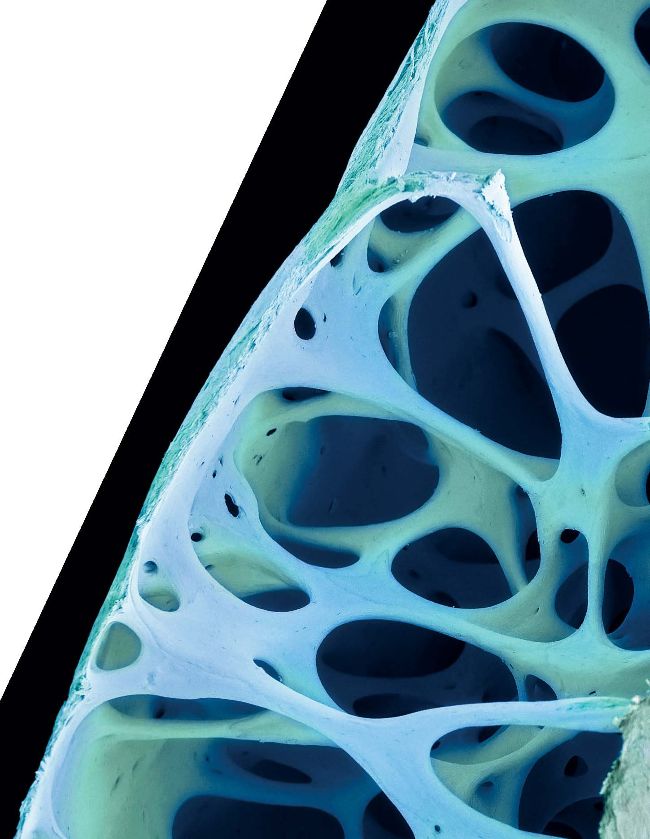BRAIN DUMP
Because enquiring minds need to know…
AH
How do electron microscopes work?
Jacob Crowley
• Electron microscopes can view things in much more detail than light-based microscopes. To do this they use a beam of high-energy electrons to scan the surface of the specimen placed under the microscope. When the electrons hit the specimen, they are reflected and directed towards a detector, creating an image of the sample. Because the electrons’ wavelengths are much shorter than that of light, the image is much more detailed and can show small specimens such as bacteria or the minute details of metals and crystals.
Want answers?
Send your questions to…
How It Works magazine
@HowItWorksmag
@howitworks
futurenet.com

This close-up image of a bird’s bone was taken with an electron microscope with colour added
Why do we associate purple and green with poison?
Kevin Shu
• In nature, a lot of deadly plants and animals display bright colours as a warning to keep away. While deadly poisons are found in nature, these can also be created synthetically, and bright and unnatural colours such as green and purple reflect the dangerous, unnatural properties of these substances. Green in particular is also linked to toxic and radioactive substances, especially after the discovery of radium by Marie and Pierre Curie in 1898, which was found to emit a green ‘glow’. This association has passed into popular culture, with films and video games adopting these colours to represent poisons and the artificial.